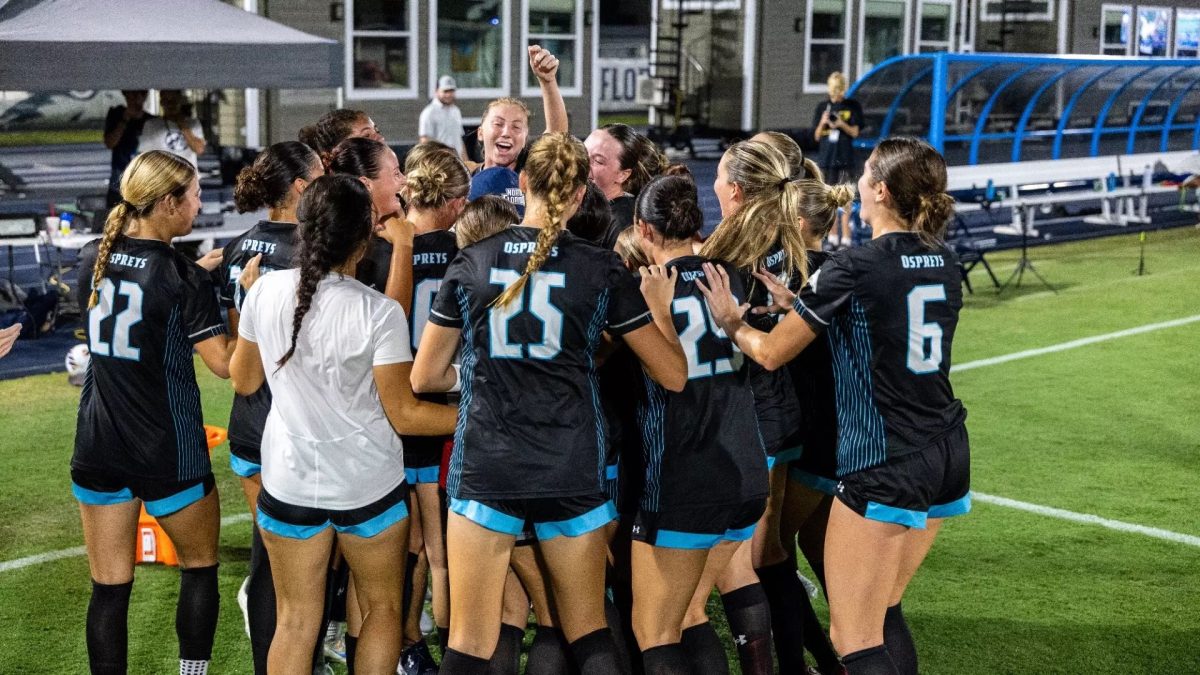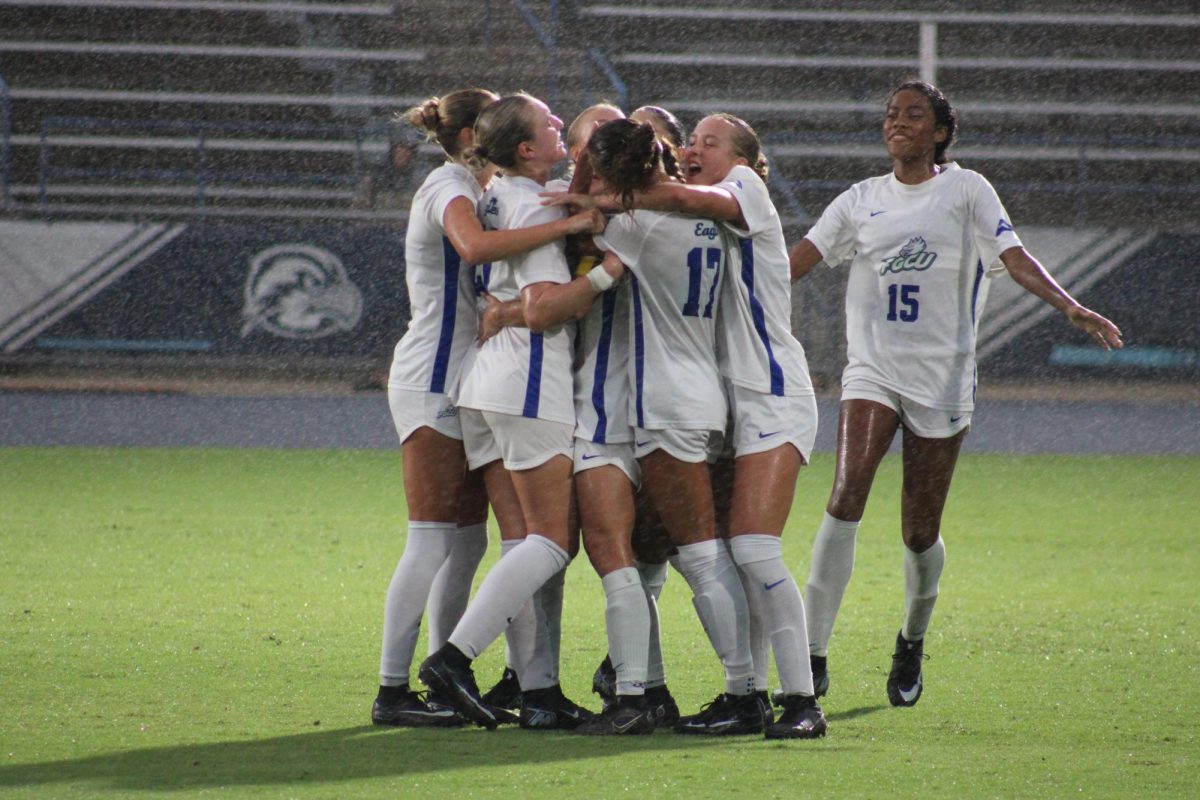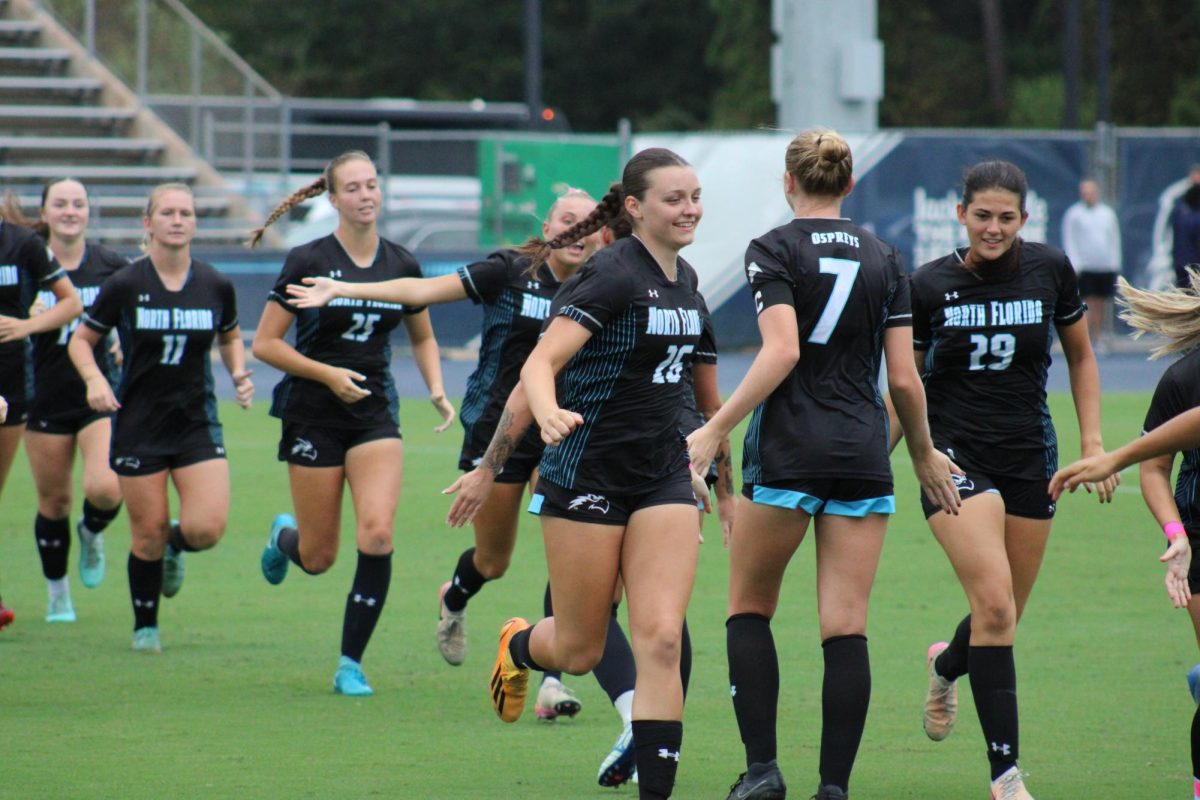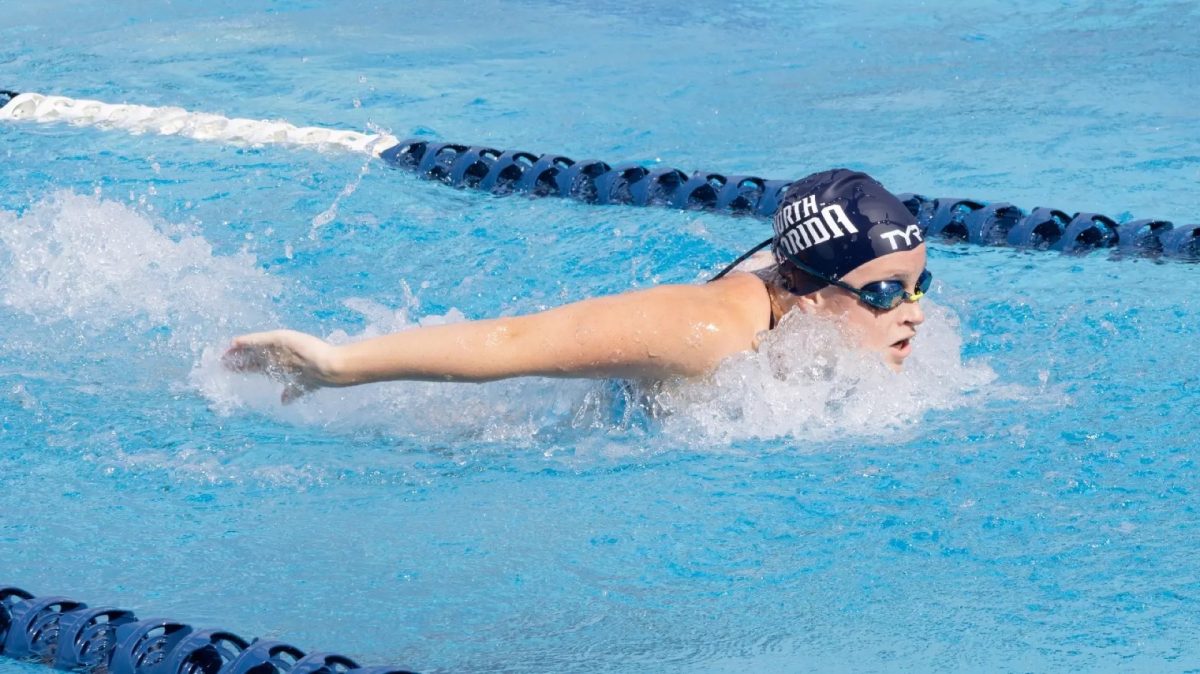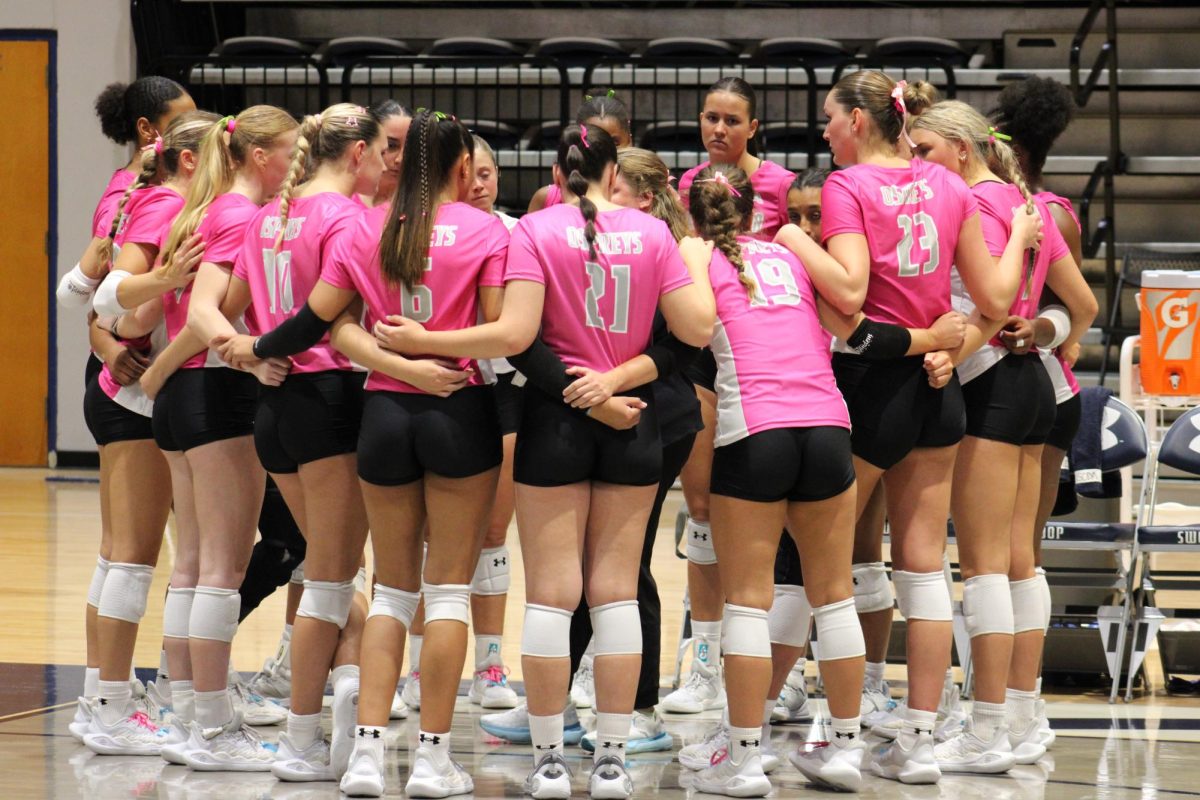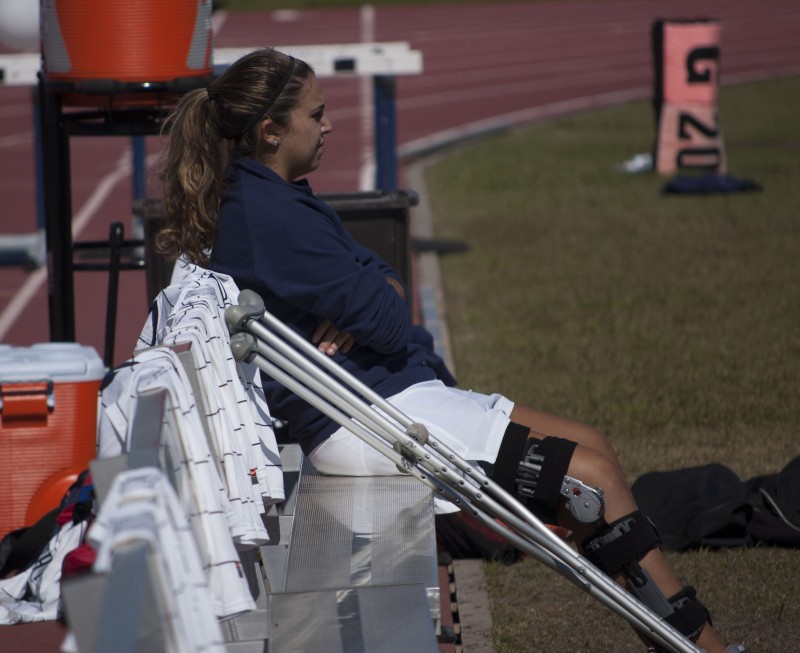
Sophomore Forward Lauren Irurzun (pictured) has missed the entire 2012 season with a right leg injury.
Injuries come out of nowhere, like deer on I-4 in the middle of the night.
Unexpected misfortune resulting in excruciating physical pain: every athlete runs the risk of injury, and UNF athletes are no exception to the rule.
Shane Donovan, a UNF men’s soccer senior defenseman, injured his hamstring during practice Sept. 6.
“It’s horrible,” Donovan said. “I’ve never been injured. I couldn’t sprint, really, and couldn’t kick the ball with my dominant [right] foot.”
Hampered by the hamstring, Donovan said it felt like someone was stabbing him in the back of the leg every time he tried to kick a ball.
“It’s definitely frustrating,” Donovan said, “but I signed up and I knew if I get hurt I still have to support my teammates.”
One of Donovan’s teammates, senior goalkeeper Brad Sienkiewicz, injured his right quadriceps Sept. 2 in a match against Florida Atlantic. Having missed nearly a month and a half, Sienkewicz remains confident that he’s getting back to health.
“I’ve trained this week at pretty much 100 percent. I would have given myself the green light for every game,” Sienkiewicz said.
As an injured athlete, Sienkiewicz’ schedule involves a 6:30 a.m. wake-up, then an hour of strength exercises including leg weight-lifting, ice and lots of stretching. Sienkiewicz said his quadriceps flared up again, Sept. 27, during a progressive kicking drill.
UNF sophomore goalkeeper, Rachel Beninati, suffered a concussion during the Florida Gulf Coast game Oct. 5. The recovery process for a head injury is much different than the process for any other part of the body.
“With concussions [gauging recovery time] is kind of hard. You basically just have to rest,” Beninati said.
Beninati declined to comment on how and when the concussion occurred, but conceded the injury occurred outside of soccer.
Beninati said she passed the impact test, given to athletes with a concussion, within the first week of her injury. The assessment, officially known as a neurocognitive test, is computerized and examines athletes by asking them to memorize shapes and to then name the list of shapes they observed, all while being timed.
“Once I passed [the impact test], I started a recovery plan,” Beninati said. “Right now I’m back in full contact.”
Beninati said the recovery plan requires her to hit the training room by 7 a.m. daily, and to give herself an hour of recovery before each practice. The plan itself includes ten minutes on the elliptical, ten minutes on the bike, non-contact drills and full-contact drills. Beninati said she’s in the training room two to three times a day between classes.
“The days are pretty early for me,” Beninati said. “But I expect a lot of focus out of myself.”
Athletic Trainer Lisa Diebenedetto has worked with Beninati through the concussion, providing instruction and encouragement for the sophomore goalkeeper.
Diebenedetto said concussions heal mostly on their own, and that there is only so much she can do to help rehabilitate the athlete. “We try to make sure [the athletes] understand the gravity of a concussion.”
Diebenedetto said that Beninati had shown typical symptoms, including headaches, dizziness and the feeling of mental slowness.
“You always have to be positive,” Diebenedetto said. “You can’t see [concussions], so they’re especially difficult to manage.”
The injured soccer athletes at UNF have more in common than these recent grievances: they share a desire to get back on the pitch.




